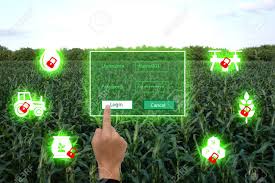Smarter Agriculture and Better Earth
By 2050, the world’s population will be increasing by one-third. Mostly an additional 2 billion people will live in developing countries. At the same time, these people will be living in cities. If existing income and consumption growth trends continue, in an estimated manner, that agricultural production will have to increase by 60 per cent by 2050 to satisfy the expected demands for food and feed.
Agriculture, by using technology, must immediately transform itself if it is to feed a growing global population and provide the basis for economic growth and to make reduction for poverty.
This climate change will make the struggle more difficult under a business as a general scenario, due to adverse impacts on agriculture, related costs.

Achievement for agricultural development and food security targets, adaptation to climate change and lower emission intensities every result will be highly necessary.
Transformation must be accomplished without using the natural resource base. Climate change has been already having critical an impact on agriculture and food security as a result of increased unpredictability of weather conditions and prevalence of unusually events.
These changes might also affect increasingly global food prices. As we mentioned, developing countries are being especially hard hit by these tough changes. Most of the small-scale producers, who are including livestock keepers, fishers and foresters, are already struggling with a degraded natural resource issue. They usually lack knowledge about potential options for adapting their production systems and have not enough assets and take to risk capacity to access and use high-tech and knowledge of financial services.
if possible, what we need is sustainable increases in agricultural productivity via reducing food losses and waste; for all food, systems to be more resilient and can adapt to climate change, and for enabling agriculture to contribute to the reduction and removal of greenhouse gas emissions.
The key issues are for Smart Agriculture
- Removing or reducing greenhouse gas emissions and increasing carbon sequestration
- Increasing incomes and productivity
- Enhancing resilience of livelihoods and ecosystems
What needs for adaptation on Smart Agriculture are;
- Changing the farm portfolio of crops and livestock
- Modifying planting times
- Improving fertilizer use and irrigation practices
- Switching to varieties resistant to heat and drought
- Developing and adopting new cultivars
- Integrating the use of climate forecasts into cropping decisions by using high-tech
- Increasing the storage of feed and regional farm diversity
- Improving soil and water management, including conservation agriculture
- Increasing livestock herd management and nutrition to increase productivity
- Productivity is key for Smart Agriculture.
So, smart agriculture has defined as the application of modern Information and Communication Technologies into agriculture, leading to what is called a Third Green Revolution.
Following the plant breeding and genetics revolutions, this Third Green Revolution is taking over the agricultural world based upon the combined application of IT solutions such as precision equipment, the Internet of Things (IoT), Big Data, sensors and actuators, geo-positioning systems, robotics, Unmanned Aerial Vehicles (as commonly known UAVs or drones), etc.
Smart Agriculture has important potential to deliver sustainable agricultural production and a more productive, based on a more precise and resource-efficient approach. Furthermore, this approach must provide the farm holder with added value in the form of better decision making or more efficient exploitation operations and management. Additionally, smart agriculture is strongly related to three interconnected technology fields
Management Information Systems (MIS)
There must be well-planned systems for collecting, processing, storing and disseminating data in the form what we need to achieve all operation of farm and functions.
Sustainable Agriculture
The key important is Management of spatial and temporal variability to improve economic returns following the use of inputs and reduce environmental impact for sustainable agriculture.
Which means decision support systems for whole-farm management with the goal of optimizing returns on inputs while preserving resources, enabled by the widespread use of , aerial images by drones, global position system and the latest generation of hyperspectral images provided by satellites, allowing the creation of maps of the spatial variability of as many variables as can be measured (e.g. terrain features/topography, crop yield, , organic matter content, nitrogen levels, moisture levels etc).
Robotics and Automation for Agriculture
In order to productivity and environment, The process of applying robotics, artificial intelligence techniques, automatic control and at all levels of agricultural production, including farming bots and farming drones.
Smart agriculture applications do not target only large, conventional agriculture approach, but could also be new levers to boost other common or growing trends in agricultural exploitations, such as family farming like small or complex spaces, preservation of high quality, specific cultures or particular varieties so on, organic agriculture, and enhance a very respected and transparent farming according to usage society and consumer consciousness.
Smart Agriculture is able to also provide great benefits in terms of environmental issues, for instance, through more efficient use of water, or optimisation of process and inputs.